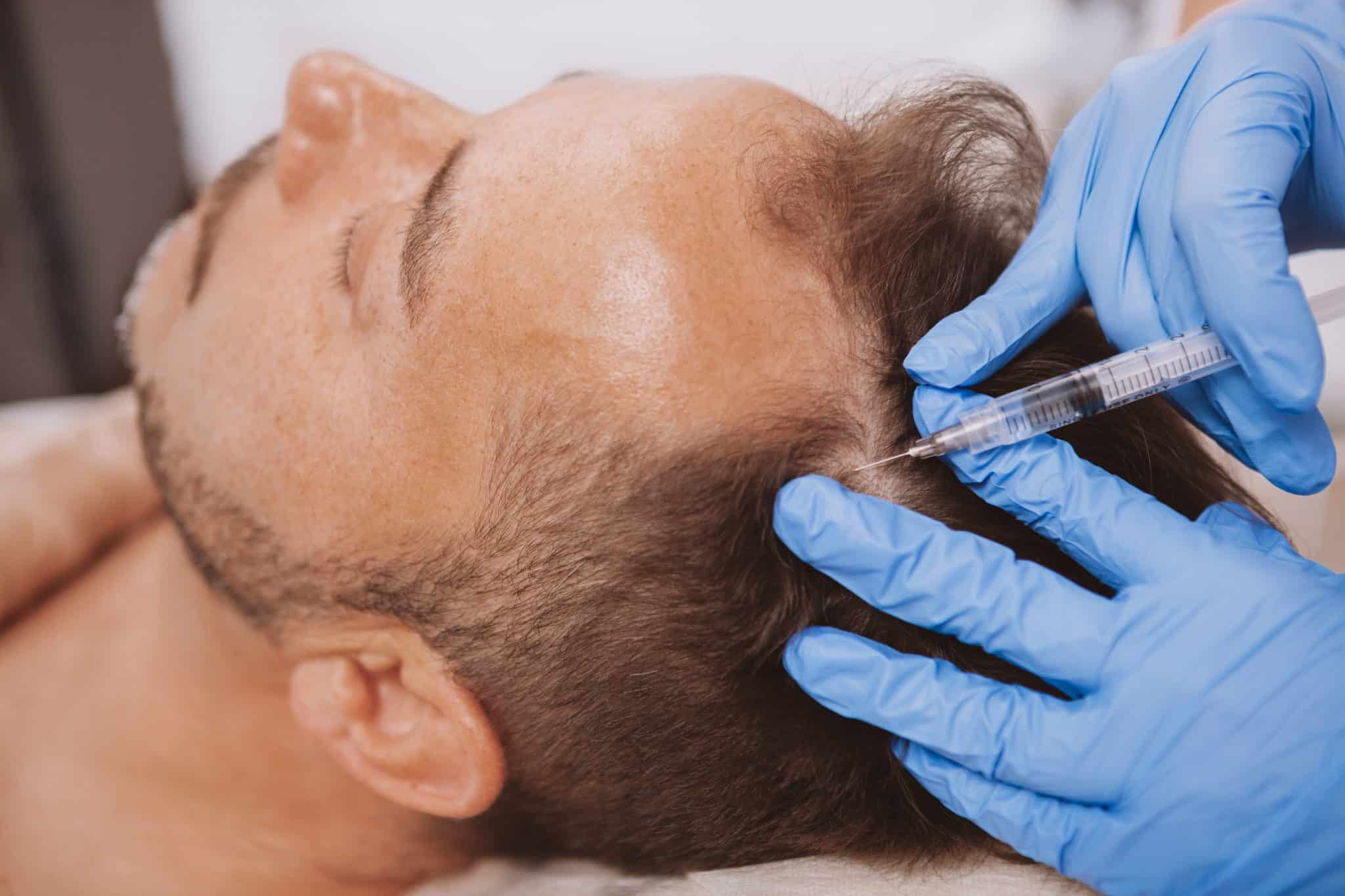Approximately 6.8 million people in America (and 147 million worldwide) will experience it at some point in their lives – but when you experience it, you may feel like the only one. It can feel like you’re not yourself anymore, causing you to lose confidence in your appearance. How can you get to the root of it?
What is alopecia?
Alopecia is the medical term for any type of hair loss. It’s further broken down by category:
Scarring (cicatricial) alopecia
This causes a complete loss of hair follicles, so there is damage to the scalp that results in the hair not being to grow back, ever. This kind of alopecia affects about 3% of people who experience hair loss and is recognizable predominantly by the scabby or “ragged” appearance of the patches, as the hair follicle is killed and then replaced by scar tissue.
Non-scarring alopecia
These are the more common forms of alopecia, including alopecia areata and androgenetic alopecia; these forms don’t kill the hair follicle – they more or less just cause it to be dormant. The most common kinds and causes:
Alopecia Areata & Alopecia Totalis
This an auto-immune disorder where the body attacks its own hair follicles, keeping the hair from growing. Areata falls out in small patches (areas), most commonly on the scalp and in facial hair; Totalis is complete (total) loss of hair.
Androgenetic Alopecia (male- and female-pattern baldness)
Hair loss that’s caused as a result of hormonal changes that affect the hair growth cycle.
Is alopecia genetic?
Partially. Alopecia areata is a polygenic disease, meaning it requires many genes to contribute to bringing the condition “alive;” stress, diet, hormones, and lifestyle play just as much of a role as genetics do for this one – it’s estimated that about 20% of people who experience alopecia have a direct relative with the condition. Some forms are caused by hormonal changes and others are caused by genetics, though the direct links are still not completely clear. There’s about a 50% rate of heredity for both males and females. Stress, diet, and lifestyle play a role as well.
What happens in the body to cause alopecia?
The body overreacts to the hair follicles, basically seeing them as “bad” – your T-cells (immune “fighter” cells), as a result, kills the follicles’ ability to grow hair. A healthy hair cycle involves 3 phases: anagen (growing phase), catagen (regressing phase), telogen (resting phase). This entire process is regulated by prostaglandins (PGs), which, when out of balance, cause the hair cycle to become imbalanced.
To add another ingredient to this relatively confusing hair mix, you’ve also got the AR gene at play – it’s what provides the body with the instructions to map out the sex hormones in your body. So what’s this got to do with hair? Testosterone is one of those sex hormones, and it turns into DHT with the aid of the enzyme Type II 5-alpha reductase, located in hair follicle’s oil glands. When DHT binds to these reductase receptors, it shrinks the hair follicle – so all the correct balance of prostaglandins in the world can’t function at the root as it should.
What is the best treatment for alopecia?
PRP injections: a small amount of your own blood is drawn and placed in a centrifuge to separate the platelets out, which are then injected at the site of hair loss. The platelets are rich in growth factors that stimulate collagen, tissue, and cell regeneration, including attracting stem cells to the repair site, to stimulate follicle health and hair growth.
Anti-inflammatory steroid injections: corticosteroids are injected at the site of the affected area(s) every 4-6 weeks, reducing inflammation and mitigating the autoimmune attack hair follicles.
Is your hair thinning or falling out, and you’ve tried changing your diet and supplementing with vitamins to no avail? Contact our office at the Skin Cancer and Cosmetic Surgery Center today to find out how you can get your hair – and confidence – back!

